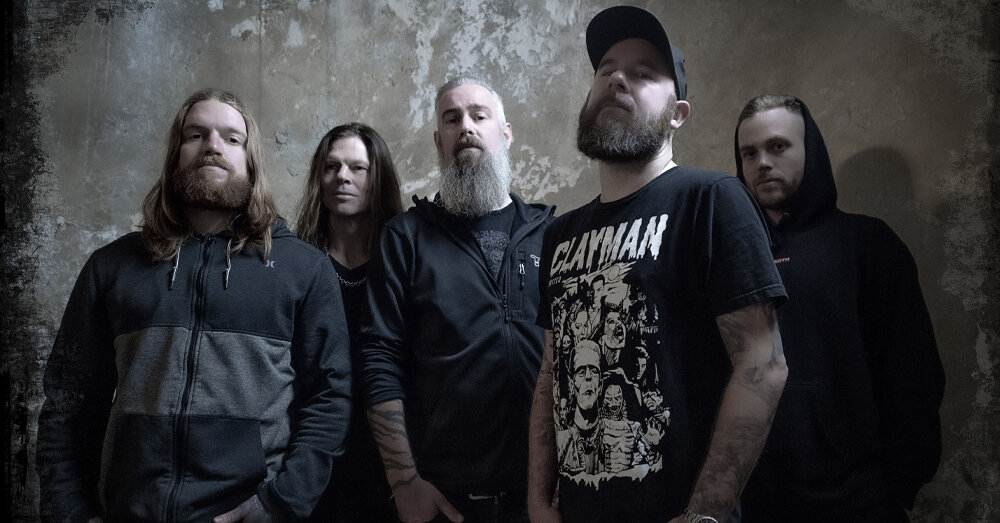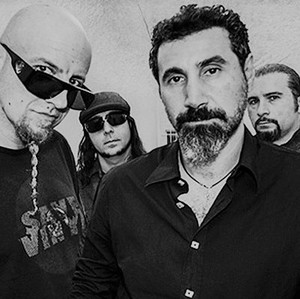Thrash metal, known for its fast tempo, aggressive guitar riffs, and rapid drumming, emerged in the early 1980s. Bands like Metallica and Slayer pioneered this genre, infusing it with raw energy and rebellious spirit. Thrash metal often explores themes of social injustice, politics, and personal turmoil, resonating with listeners who crave intensity and speed in their music.
In stark contrast, black metal embraces a darker, more atmospheric tone. Originating in the 1980s in Norway, bands like Mayhem and Burzum popularized black metal with its raw production, shrieking vocals, and occult themes. Black metal is characterized by its lo-fi sound, tremolo-picked guitar melodies, and often controversial lyrical content focusing on themes of nature, anti-Christianity, and mysticism.
Death metal, on the other hand, is notorious for its guttural vocals, complex guitar solos, and relentless drumming. Bands such as Death and Cannibal Corpse pushed the boundaries of musical extremity with their technical prowess and lyrical exploration of violence, gore, and existential dread. Death metal’s intense soundscapes and aggressive instrumentation attract fans who appreciate the genre’s uncompromising brutality.

Beyond these prominent subgenres, metal music continues to evolve and diversify. Subgenres like power metal, doom metal, and progressive metal offer further variations on the genre’s themes and musical structures. Each subgenre within metal music not only celebrates its unique style but also fosters a passionate community of fans who connect deeply with its sonic and thematic elements.
The diversity of metal music’s subgenres—from the breakneck pace of thrash to the atmospheric abyss of black metal and the brutal intensity of death metal—showcases the genre’s ability to continually reinvent itself while staying true to its roots of rebellion, intensity, and sonic exploration. Whether you’re drawn to the lightning-fast riffs of thrash or the haunting melodies of black metal, there’s a subgenre within metal music that speaks to every listener’s desire for raw emotion and musical virtuosity.
Exploring the Evolution: The Rise of Thrash Metal and Its Impact on Music

The roots of thrash metal can be traced back to bands like Metallica, Slayer, Megadeth, and Anthrax, who pioneered its defining characteristics. These bands injected a new energy into metal music by speeding up the tempo, incorporating complex rhythms, and pushing the boundaries of lyrical content. They challenged societal norms and explored themes of war, politics, and personal turmoil with unapologetic honesty.
What sets thrash metal apart is its relentless energy and technical prowess. Guitar solos that shred through speakers like lightning bolts, accompanied by thunderous basslines and percussion that feels like an artillery barrage, create an adrenaline rush unlike any other. It’s music that demands attention, leaving listeners exhilarated and empowered.
The impact of thrash metal extends far beyond its sonic intensity. It has influenced countless bands across genres, shaping the evolution of heavy music globally. From Europe to South America, thrash metal’s aggressive sound has resonated with audiences seeking music that reflects their discontent and challenges the status quo.
Thrash metal stands as a testament to the power of music to provoke thought, inspire change, and unite people through shared experiences of intensity and passion. As the genre continues to evolve and new bands take up its mantle, one thing remains clear: the impact of thrash metal on music is indelible and continues to reverberate loudly.
Beyond Darkness: Unveiling the Intricacies of Black Metal’s Unique Sound
At its core, Black Metal distinguishes itself from other metal genres through its raw, lo-fi production style. Unlike the polished sound of mainstream metal, Black Metal embraces a deliberately harsh and abrasive quality. This rawness enhances the music’s primal energy, transporting listeners into a world of bleak atmospheres and existential musings.
Instrumentally, Black Metal incorporates rapid tremolo-picked guitar riffs that create a wall of sound, often accompanied by blast beat drumming that intensifies the chaotic pace. This frenetic instrumentation is complemented by shrieked or growled vocals, which serve not only as a lyrical delivery but also as an additional instrument adding to the genre’s discordant texture.
Lyrically, Black Metal explores themes of Satanism, paganism, folklore, and nature, reflecting a rebellion against societal norms and organized religion. These themes are often conveyed through poetic and cryptic lyrics that provoke thought and evoke a sense of unease, contributing to the genre’s mystique and allure.
The production of Black Metal albums often embraces imperfections, such as background noise or intentional distortion, to maintain an authentic and underground feel. This unconventional approach to production aligns with the genre’s ethos of rebellion and non-conformity, rejecting commercial standards in favor of artistic integrity and emotional intensity.
Black Metal’s unique sound transcends mere music, offering listeners an immersive journey into darkness and introspection. Its raw energy, unconventional production, and thematic depth make it a genre that continues to captivate and provoke, challenging listeners to delve deeper into its enigmatic world.
From Aggression to Artistry: Decoding the Complexities of Death Metal

Death metal, often misunderstood as mere noise, unveils a tapestry of intricate artistry and profound expression. Originating in the late 1980s, this subgenre of heavy metal music has evolved into a profound form of musical expression. At its core, death metal explores themes ranging from existential angst to societal critique, using visceral lyrics and intense instrumentals to evoke raw emotions.
What sets death metal apart is its technical prowess and unconventional musical structures. Guitar riffs cascade like a thunderstorm, drums pound with relentless precision, and vocals range from guttural growls to piercing shrieks. This sonic assault isn’t just about volume—it’s a carefully crafted symphony of chaos that challenges traditional musical norms.
But beyond its aggressive exterior lies a deeper narrative. Death metal lyrics often delve into philosophical inquiries, exploring themes of mortality, spirituality, and the human condition. Bands like Death and Cannibal Corpse have pioneered lyrical themes that provoke thought and introspection, inviting listeners to explore the darker corners of human existence.
The genre’s appeal extends beyond its music. Death metal culture is a community where fans find solace and connection through shared experiences. Concerts become cathartic rituals, where the energy of the music unites a diverse audience in a powerful, almost spiritual, experience.
In essence, death metal isn’t just about noise—it’s a canvas where musicians paint with emotions, and fans find meaning in the chaos. It challenges perceptions, celebrates individuality, and pushes the boundaries of what music can achieve. So next time you hear the thunderous roar of a death metal track, listen beyond the surface. You might find a profound expression of human complexity and a journey into the depths of artistic rebellion.
Genre Defining: How Thrash Metal Redefined the Boundaries of Speed and Aggression
Imagine yourself in the late 70s, where heavy metal was dominated by bands like Black Sabbath and Judas Priest. While these bands brought heaviness and darkness to the forefront, it was the advent of thrash metal that injected a new level of speed and aggression into the scene. Bands like Metallica, Slayer, and Megadeth burst onto the stage with blistering tempos, rapid-fire drumming, and shredding guitar solos that left audiences in awe and critics scrambling to keep up.
What set thrash metal apart from its predecessors was its unapologetic approach to pushing musical boundaries. Songs were shorter, yet packed with adrenaline-pumping energy. Lyrics tackled themes of social alienation, political unrest, and personal turmoil with a ferocity that resonated deeply with a disillusioned youth culture.
Thrash metal’s impact extended beyond just music; it created a subculture defined by its intensity and non-conformity. Fans, known as thrashers, embraced a DIY ethos, creating underground tape trading networks and fiercely defending their genre against mainstream criticism.
The genre’s influence rippled across the global metal scene, spawning countless subgenres and inspiring generations of musicians to embrace speed, aggression, and technical prowess. Bands from Europe to South America adopted thrash metal’s blueprint, adding their own twists and interpretations while staying true to its core values.
Even today, thrash metal continues to evolve and thrive, with new bands pushing the boundaries of speed and aggression in innovative ways. Whether it’s the relentless drumming of Slayer, the intricate riffing of Metallica, or the lyrical intensity of Megadeth, thrash metal remains a cornerstone of heavy metal music—a genre defining its era and leaving an indelible mark on musical history.
Into the Abyss: Understanding the Philosophical Themes in Black Metal
At its core, black metal explores themes of nihilism, existentialism, and the human condition. Bands like Burzum and Mayhem, pioneers of the genre, use dissonant chords and harsh vocals to evoke a sense of bleakness and despair. They confront listeners with the harsh realities of mortality and the futility of existence, prompting introspection on the meaning of life itself.
Philosophically, black metal embraces a form of nihilism that rejects traditional values and embraces chaos and destruction as a means of liberation. It challenges societal norms and religious dogma, advocating for individualism and personal sovereignty. Through its music and aesthetics, black metal creates a space for contemplation on the nature of good and evil, freedom, and the pursuit of authenticity in a world plagued by conformity.
Metaphorically, black metal can be likened to a tempestuous storm raging against the calm of societal complacency. Its lyrics and imagery paint vivid landscapes of darkness and despair, inviting listeners to explore the depths of their own psyche. The genre’s use of symbolism, such as inverted crosses and occult references, serves to provoke thought and challenge preconceived notions of morality and spirituality.
Black metal stands as more than just a genre of music; it is a philosophical journey into the abyss of human existence. It forces listeners to confront uncomfortable truths and encourages them to forge their own path amidst a chaotic world. Through its uncompromising expression and provocative themes, black metal continues to captivate and provoke, leaving an indelible mark on both music and philosophy alike.








